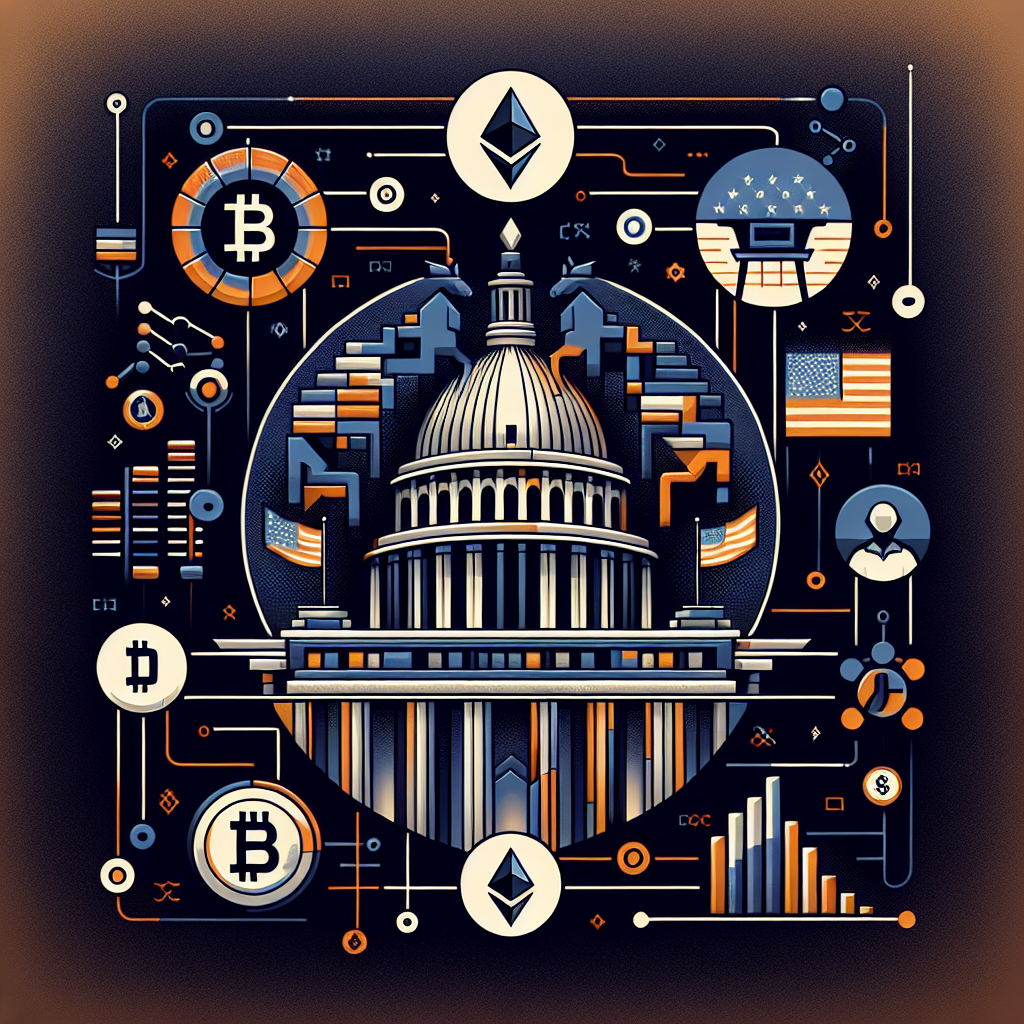The landscape of cryptocurrency regulation in the United States is experiencing an unprecedented shift as a comprehensive bipartisan bill approaches completion. Pioneering industry leaders, including Coinbase CEO Brian Armstrong, have heralded this development as a turning point that could solidify the United States as a global hub for digital asset innovation, bolster institutional investment, and protect the evolving landscape of decentralized finance (DeFi) and stablecoins. As lawmakers push for submission before Thanksgiving and potential passage by the end of the year, digital asset markets are already responding, signaling the far-reaching impact this regulatory momentum could have.
Regulatory Clarity: The Drive Towards Market Structure
Brian Armstrong, the influential CEO of Coinbase, recently announced that the U.S. cryptocurrency regulatory bill is now 90% complete. Responsible for some of the most impactful digital asset products and services, Armstrong has been at the forefront of advocacy, fostering dialogue with both Senate Democrats and Republicans. Through his engagement, the legislative process has secured notable bipartisan support, demonstrating a unified recognition of the digital asset sector’s importance to the American economy.
Prior to this legislative effort, the lack of clear, consistent regulation led to periodic uncertainty among innovators, investors, and major institutions. Nevertheless, with the new bill aiming to define market structure and clarify legal frameworks, the objective is to ensure sufficient oversight while driving responsible innovation. Armstrong’s public statements highlight the critical need for such clarity, especially as it relates to the safeguarding of user rights and the encouragement of new technologies such as DeFi, which enables peer-to-peer financial services outside traditional banking institutions.
The Balance Between Innovation and Consumer Protection
As the cryptocurrency space has evolved, so too have the services and products offered, from digital asset trading to decentralized lending, borrowing, and yield-generating opportunities. Stablecoins—cryptocurrencies pegged to the value of fiat currency, such as the US dollar—have become foundational to this new economy, enabling seamless transfer of value and new forms of digital rewards.
The forthcoming legislation addresses these innovations directly by proposing rules designed to foster growth while instituting standards to protect consumers. Among the bill’s objectives is preserving the right of users to earn rewards through stablecoins and other DeFi applications—a protection that not only benefits individuals but also provides a clear rulebook for startups and established players.
This approach is widely anticipated to give compliant projects the security needed to attract larger investments and pursue rapid innovation. By embracing a regulatory path that rewards compliance and discourages bad actors, U.S. lawmakers are betting that the domestic digital asset sector will flourish and attract an even broader array of global partners and investors.
Bipartisan Support: A Unifying Force in Crypto Legislation
One of the most notable aspects of the bill’s progress is its bipartisan support in a sharply divided Congress. Lawmakers from both sides of the aisle recognize the strategic importance of digital asset markets for American competitiveness, job creation, and technological leadership. Despite ongoing challenges such as government shutdowns, the momentum behind the legislation remains strong, driven by a shared vision of American leadership in the global financial innovation race.
“Despite the ongoing government shutdown in the United States, the momentum for clarifying the market structure bill is unprecedented. I have communicated with Senate Democrats and Republicans who hope to complete this work,” said Brian Armstrong. “The bill is 90% finalized, with all parties working to determine the final 10%, and we are close to the goal. Coinbase will advocate for clear rules to protect innovation in the DeFi space and the rights of users to earn rewards in stablecoins. I am optimistic that the bill can be passed by the end of the year and hope it can be submitted for review before Thanksgiving.”
Recent legislative history, such as the Infrastructure Bill of 2021, demonstrated the disruptive effect that regulatory developments can have on digital asset markets and innovation. However, the current market structure bill seeks a more comprehensive and enduring approach, reflecting on lessons learned from earlier regulatory interventions and prioritizing both clarity and flexibility for emerging technologies.
Preparing for an Institutional Investment Surge
The imminent arrival of clear regulations is already affecting market sentiment. Cryptocurrencies like Ethereum (ETH), USDC, and DeFi governance tokens are drawing renewed attention from both retail and, crucially, institutional investors. With the removal of regulatory ambiguity, large financial entities—ranging from hedge funds to pension managers—can more confidently allocate capital to compliant projects.
For context, Ethereum (ETH), as reported by CoinMarketCap, traded at over $3,800 with a market capitalization exceeding $466 billion. These figures underscore the magnitude of assets potentially influenced by new legislation. With recent trading data showing moderate gains despite broader market volatility, analysts suggest that regulatory clarity will pave the way for greater price stability and new price discoveries shaped by institutional flows, rather than solely speculative retail activity.
Historically, the digital asset market responds to clear legislative signals with surges in investment and innovation. This trend is expected to intensify as the U.S. regulatory framework aligns with evolving international standards, providing global investors and entrepreneurs with assurance that American markets are both stable and forward-looking.
The Potential Ripple Effect on DeFi and Stablecoins
The decentralized finance (DeFi) ecosystem, in particular, stands to benefit enormously from new U.S. regulations. DeFi protocols, which automate traditional financial services through smart contracts, have faced frequent hurdles related to uncertainty and compliance risks. By outlining standardized pathways for innovation and formalizing the rights of users to participate in yield-generating activities (such as stablecoin rewards), the bill promises to reduce friction for builders and enhance trust for users.
Additionally, clarity around stablecoin issuance and usage is expected to attract further investment from fintech firms, banks, and payment companies seeking to leverage blockchain-based payment rails. For consumers, enhanced protections and clearer recourse mechanisms ensure that digital asset usage remains both innovative and secure.
What Does This Mean for Global Competitiveness?
The United States has historically been a center for financial innovation, and with the digital revolution progressing, maintaining a leadership position is of strategic interest. Other countries have already started to promulgate their own crypto regulations, with the European Union’s Markets in Crypto-Assets Regulation (MiCA) serving as a prime example.
By establishing a comprehensive, pragmatic, and innovation-friendly regulatory framework, the U.S. is seeking not only to mitigate risks associated with digital assets but also to attract global talent, companies, and capital. In this context, industry leaders believe that failing to provide clear rules would result in the migration of entrepreneurial and investment activity abroad—something bipartisan lawmakers are keen to avoid.
Challenges and Remaining Questions
Despite broad support and urgent momentum, several questions remain regarding the specifics of the final 10% of the bill. Key outstanding issues include the precise scope of regulatory oversight, methods for distinguishing between various token types, and the harmonization of federal and state-level frameworks, especially given the U.S.’s complex financial regulatory landscape.
Additionally, some critics warn that overly rigid rules could stifle innovation, while others emphasize the need for strong consumer protections and robust mechanisms for addressing fraud, security breaches, and systemic risks. Advocacy from both industry voices and policymakers focuses on ensuring the balance between these important priorities is struck in the final text of the legislation.
Looking Forward: The Outlook for Investors and Innovators
As the bill nears submission, anticipation is mounting across digital asset and financial markets. Analysts forecast that legislative certainty will usher in a new era of growth for the U.S. crypto market, potentially propelling domestic startups onto the global stage and establishing new benchmarks for responsible digital asset innovation and investment.
The broader financial sector is watching closely. Regulatory-driven shifts could unlock new opportunities for traditional financial institutions to offer crypto-based services, integrate blockchain technology into settlement and payment systems, and partner with DeFi protocols. The resulting influx of talent and capital could also spur the launch of new products, services, and platforms, reinforcing the U.S.’s status as a leader in the digital economy.
Whether you are a retail investor, entrepreneur, or institution, the coming months promise to shape the trajectory of U.S. cryptocurrency regulation—and with it, the future of financial innovation worldwide. With bipartisan commitment, industry advocacy, and growing public support, the U.S. is poised for a watershed moment in the evolution of digital finance.
Disclaimer
The information provided in this article is intended for general market commentary and informational purposes only. It does not constitute investment advice, and readers should conduct their own research before making investment decisions.


















